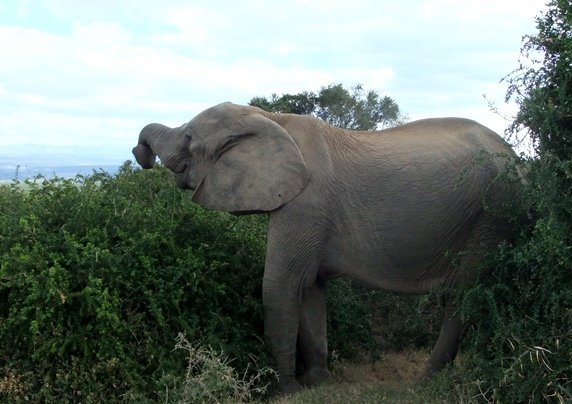Elephant eating

Author: Ivan Lätti
Photographer: Thabo Maphisa
What would an album of Addo Elephant National Park photos be without some elephant pictures? The region includes one of south Africa’s thicket vegetation types, a biome where elephants thrive.
The Albany thicket comprises dense to impenetrable vegetation, dominated by spiny and succulent trees and shrubs. It exists in a semi-arid to arid region, receiving an average rainfall of less than 445mm per year. The Park’s existence ensures a future for a certain vegetation mix and a home for wildlife generally, particularly for the African elephant. Their needs for space are increasingly in conflict with Lebensraum requirements of burgeoning humanity.
Rainfall is relatively evenly distributed throughout the year in the Park, peaking in February to March and in October to November. Frost occurs at times during winter.
There is food growing on a sustainable basis for the elephants within the confines of the Park, provided that their numbers are managed in terms of the carrying capacity of the available terrain, these days also impacted upon by climate change.
Elephants use their trunks to pluck leaves, their tusks to tear branches and their heads for downing trees. Some plant damage serves as pruning, similar in volume to what gardeners would from time to time do for the wellbeing of their plants. A herd of elephants may do considerably more, depleting an area of foliage and even plants, thus depriving other herbivores of food. Eating up to 450 kg of vegetation per day is necessary for the adult elephant, due to a fairly inefficient digestive system that discards 60 percent of intake undigested (Wikipedia; www.sanparks.org).

